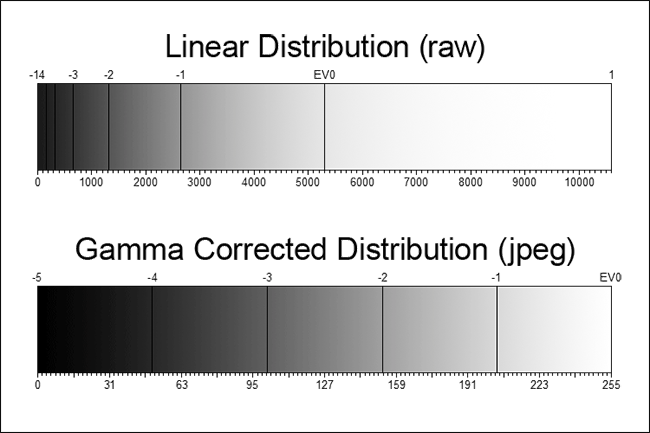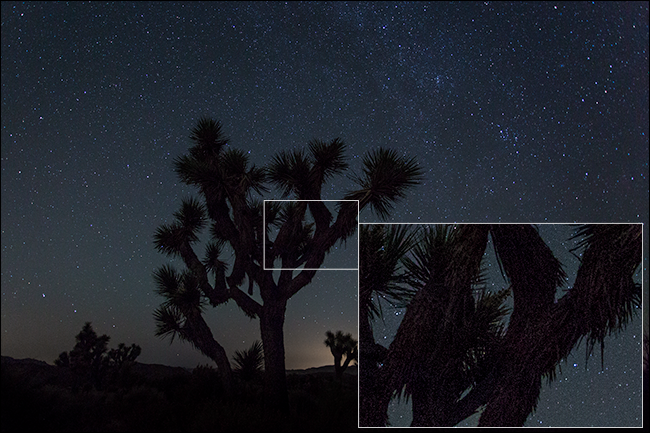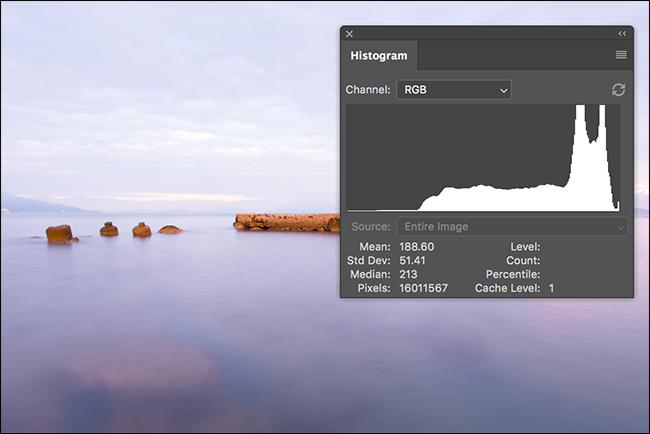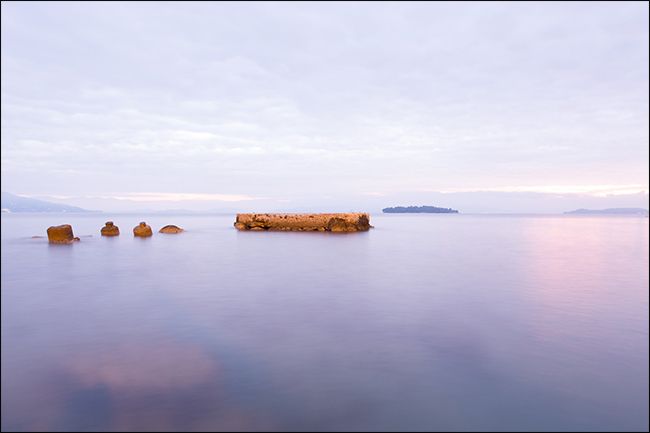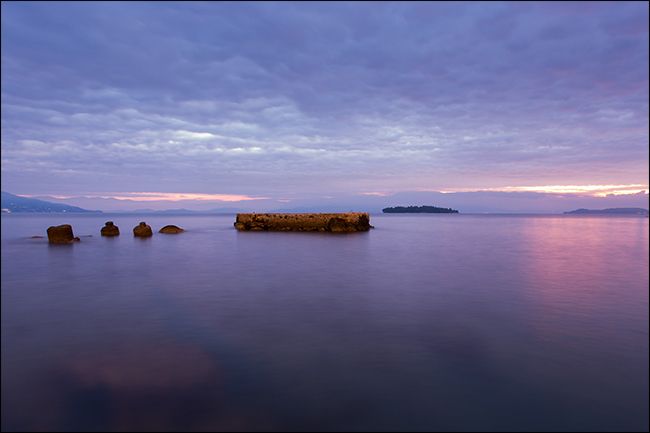"Exposing to the Right" or ETTR is the idea that you should deliberately overexpose your images---or shoot to the right of the histogram---because of the technical way that a digital image sensor records data. In post-processing, you then rebalance the image. Let's dig in.
Why ETTR Works
When you take a digital photo, light falls on the sensor and creates an electric charge at each photosite. The more light that hits each photosite, the stronger the electric charge there (and the brighter the pixel in the final image). The sensor records the values at each photosite and from that creates the image.
The problem is that the photosites respond to light in a linear fashion. The amount of charge generated at each photosite is proportional to the amount of light that hits it. Since a stop is a doubling or halving of light, the highest stop recorded uses half the discrete tonal values available. The second highest stop uses half the remaining tonal values (or 25% of the discrete tones), the third highest uses the next half (or 12.5% of the discrete tones), and so on down.
This means that the brightest areas of the image use up the bulk of the RAW image data while the dark areas are recorded with much less information. This wouldn't matter too much if digital sensors were perfect, but they're not: they always record a certain amount of noise as well.
And this is the issue. When you have lots of good data and low noise, you have a good signal to noise ratio. When you have a small amount of data, even with the same low amount of noise, you have a much worse signal to noise ratio. This is why digital noise is much more likely to show up in the shadows of your images.
By exposing to the right instead, you record as much of the image as possible in the tonal range that has more data. You can then rebalance everything in post.
How to Use ETTR
Using ETTR isn't just a matter of overexposing every photo you shoot; you need to put some thought into it. The big things you need to remember are:
- This only works if you shoot RAW. Exposing to the right does nothing for JPEG images since they automatically get converted from the RAW data by the camera. The extra data we're looking for isn't saved.
- This only works so long as you don't blow out your highlights. If you overexpose things too far, you will lose more data than you save. You can't recover highlights blown to white.
- This works best at your cameras' base ISO. Increasing the ISO too far, while increasing the exposure, also increases the amount of noise throughout the image.
- You have to post-process your images and properly develop the RAW file. They will look terrible as is.
- The histogram on your camera is based on the underlying JPEG. It's not a truly accurate picture of what's happening in the data, but it's the best we've got without hooking up a computer and using some third-party software.
With all that said, let's look at the practice of exposing to the right.
Start by taking a regular, balanced exposure of the scene. Either work in manual or aperture priority mode. This will be your baseline.
Increase the exposure by around a stop, take another photo, and check the histogram on your camera. If your highlights aren't clipping yet, increase the exposure again and take another shot.
Once the highlights start to clip badly, decrease the exposure until you find the highest possible exposure you can take without clipping the highlights. This is the money shot.
Post Processing ETTR Files
Unlike regularly exposed images, ETTR files look way too bright straight out of the camera. You need to open them in a RAW developer like Lightroom and decrease the exposure before they are usable. Here's one of my ETTR shots right from my camera.
And here it is after a small amount of post-processing. I've also made a couple of other simple edits.
As you can see, even though the clouds are way too bright in the first image, all the wonderful data is there for me to use. If I'd shot this underexposed or at the baseline, I would have lost data in the shadows, and there'd be more noise in the final image.
Exposing to the right is not something you need to do for every image. When you're taking the time to craft a perfect shot, though, it's a technique worth considering since maximizesses the amount of data in your RAW file.


